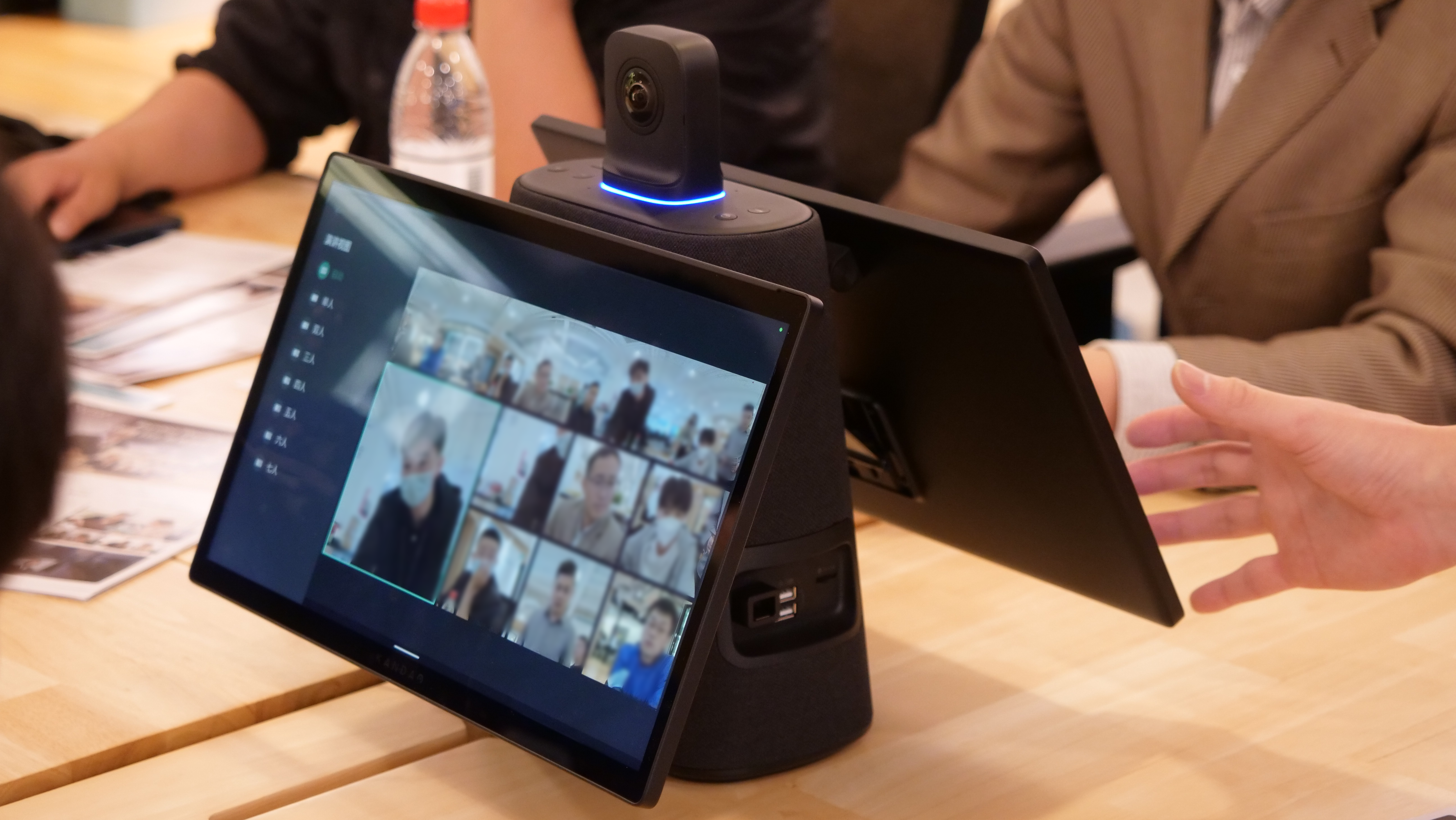
Hybrid meetings have become a common practice due to the rise of remote work, and the technology that enables this has developed rapidly in the past several years with video bars and 360 conferencing devices. These immersive video conferencing solutions creates hybrid meetings environments that feels almost as the same as in-person meetings. However, remote attendees often still feel disengaged and the gap between remote and in-office employee participation can widen. According to Microsoft’s 2022 Work Trend Index , 43% of remote workers do not feel included in hybrid meetings.
Why do remote workers feel excluded?
One of the primary challenges is the lack of face-to-face communication during hybrid meetings. Nonverbal communication plays a crucial role in human interaction, with 60% of communication being nonverbal. In-person meetings allow for participants to capture the minute shifts in posture or facial expressions, which can be challenging in a hybrid setting. Meeting facilitators may miss valuable information if they cannot see the facial expressions of their participants.
Furthermore, the loss of connection experienced when speaking with someone in person is closely tied to making eye contact. A truly inclusive hybrid meeting must provide ways for remote and in-person attendees to look at each other when communicating, especially in multi attendee room settings. Not providing this opportunity can lead to less effective meetings and awkwardness for attendees.
Challenges of Video Bar in front of room and 360 conference devices
Nowadays, some rooms are using the latest video bars in the front of the conference rooms. This still poses some challenges for true face to face communication. Participants that are closer to the camera may need to turn their heads around to speak to other in-room participants, causing remote attendees to see the back of someone’s head and missing cue facial expressions and fully capturing what people are saying. 
As a result, some organizations may opt to use 360 conferencing devices in center of room. However, in some room set ups, the monitors are placed in the front of the room, so remote participants will mostly see the side profile of an in-person participant’s face. These fixed challenges depends on a room set up, but still offer inflexible solutions for most conference rooms.
The solution: Tech that enhances human connection
Kandao's latest product, the newly-released Kandao Meeting Ultra, a 4K 360 AI Conference Device with Dual Touch Screens, addresses these issues and makes awkward camera angles and face-to-face eye contact problems a thing of the past for conference room settings.

*To protect privacy, the facial areas in the image have been blurred. The image quality does not represent the actual product. Learn more about Kandao Meeting Ultra >>>
Talk face-to-face
This innovative device solves the challenges of face-to-face communication by featuring two FHD screens situated underneath the camera. Unlike other panoramic video-conferencing devices currently available that require an external display, the Kandao Meeting Ultra has two displays already built in to allow participants to view each other directly on video calls, while offering remote participants a 360 view of the room. This natural way of have conference meetings allows for participants to maintain better eye contact and face to face communication whether they are remote or in person., enhancing the meeting experience for all participants.
The ability to see one’s face and respond to her expressions can help tremendously. Kandao Meeting Ultra can transmit 4K resolution facial image quality that accurately conveys expressions and emotions, which is particularly important for business meetings and remote collaboration where nonverbal communication cues are critical to understanding and conveying meaning.
Look good on camera from every angle
Having a good camera angle during a remote meeting is crucial, as no one wants to realize their camera is at a bad angle mid-meeting or see the side of someone's head during a conversation.
Kandao Meeting Ultra solves this problem with its upgraded AI detection algorithm 4.0, which accurately auto-frames attendees' front and close faces and enhances facial recognition and analysis capabilities. In addition, its powerful CPU, GPU, and NPU ensure a seamless conversation in ultra-low latency tracking, leading to increased participation and interaction among participants.
By placing a smart device with touchscreens in the center of a meeting room, Kandao Meeting Ultra creates a more natural hybrid meeting experience that allows participants to maintain their natural sitting and looking positions while still providing crucial nonverbal feedback to each other.
Conclusion
Hybrid work is here to stay, and it has become increasingly important for organizations to prioritize technology that enables employees to connect and communicate effectively, regardless of physical location. Inclusivity is a crucial factor, and investing in the right technology can help ensure that everyone is on equal footing during meetings. Video conferencing cameras with touchscreens are a prime example of innovative technology that can make meetings more engaging, enjoyable, and productive, ultimately strengthening the overall success of a business.
